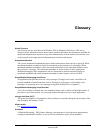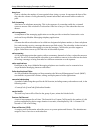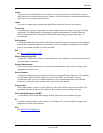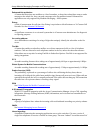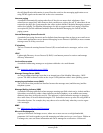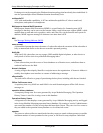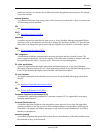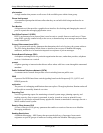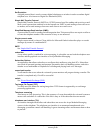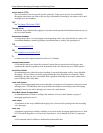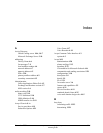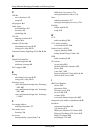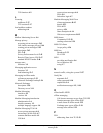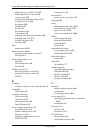
Avaya Modular Messaging Concepts and Planning Guide
IN-4 November 2004
Avaya Modular Messaging Concepts and
Planning Guide
addressing from AUDIX TUI 5-39
addressing from GUI clients
5-39
capacity limit
5-34
creating from Subscriber Options
5-37
creating from TUIs
5-36
description
5-34
identifier
5-35
list ID
5-36
list members
5-34
List number
5-36
managing from Subscriber Options
5-38
managing from TUIs
5-37
recorded list name
5-36
text name
5-35
ports
requirements
12-25
Primary mailbox address
messages to networked systems
6-3
Notify Me
6-3
Privacy Enforcement Level
Full
5-45
Notification Only
5-46
Partial
5-46
Product versions
2-2
IBM Lotus Domino version
2-2
Microsoft Exchange version
2-2
MSS
2-2
S
scalability
multiple switches per voice mail domain
1-3
scheduling
Caller Apps
4-6
secondary extension
Call Answer
6-12
Call answer
6-12
Caller application
6-13
Outcall feature
6-13
Server software components
3-1
Fax Sender Server
3-6
Mailbox Monitor Server
3-5
Message store
3-9
Messaging application server
3-2
MWI Server
3-5
Tracing Server
3-4
Serviceability
alarms, events, error logs
5-12
signaling
8-10
sizing
additional network traffic
12-27
determining busy hour
12-21
grade of service
12-22
worst case network load
12-28
SNMP
acknowledgment
5-16
alarm notification
5-15
definition
5-11
queries
5-11
standards-based clients
Avaya support policy
4-26
IMAP4 and POP3
4-25
Subscriber Options
details
4-21
subscribers
fax-enabling
7-7
switch integration
Digital Set Emulation
8-4
inband DTMF
8-3
QSIG D channel
8-3
RS-232 serial
8-4
telephony concepts
8-3
T
telephony
analog telephony inteface
8-8
concepts
8-1
T1 telephony inteface
8-8
text-to-speech
5-9
Messaging application server component
12-19
multilingual
5-9
Tracing Server
functions
3-4
introduction
3-4
TUI addressing
Dial-by-Name
6-6
local mailbox numbers
6-4



